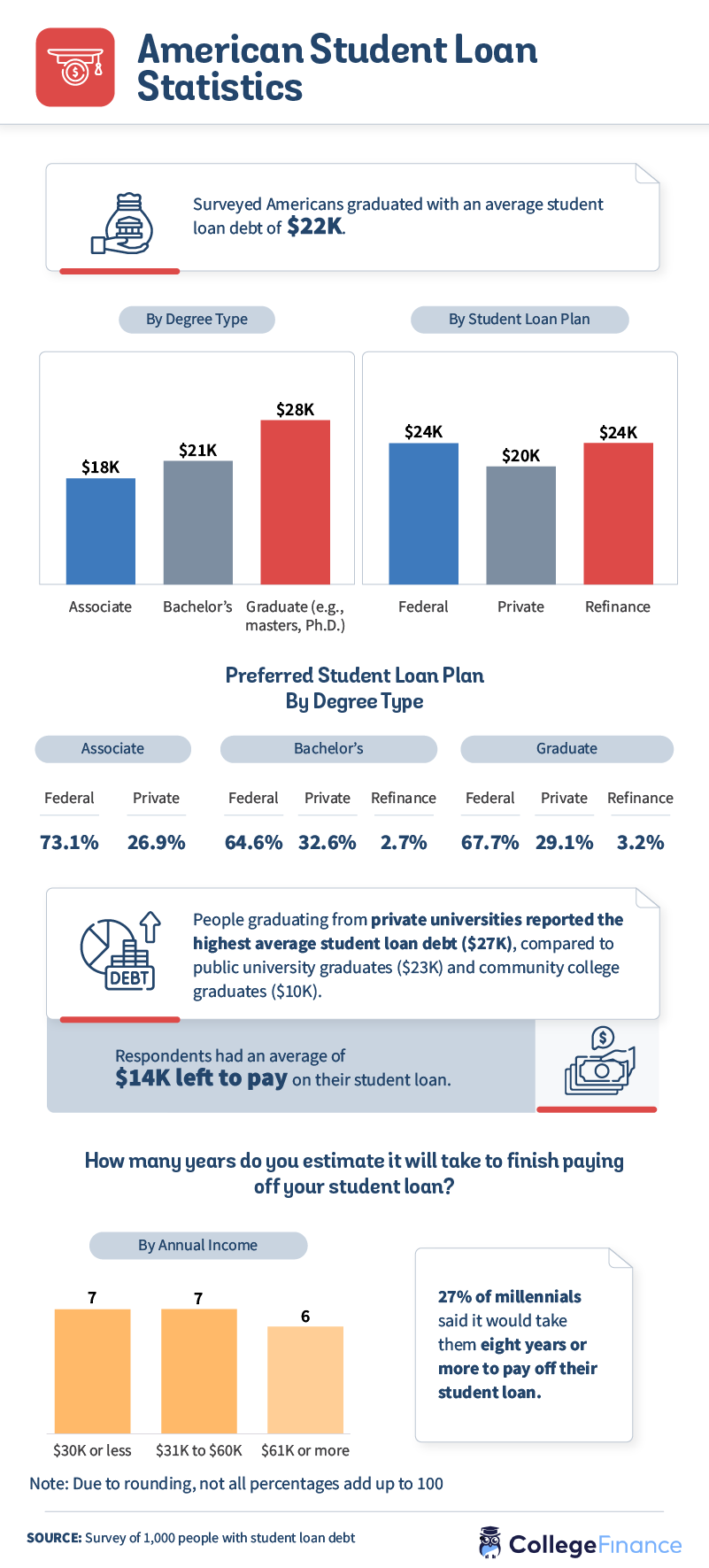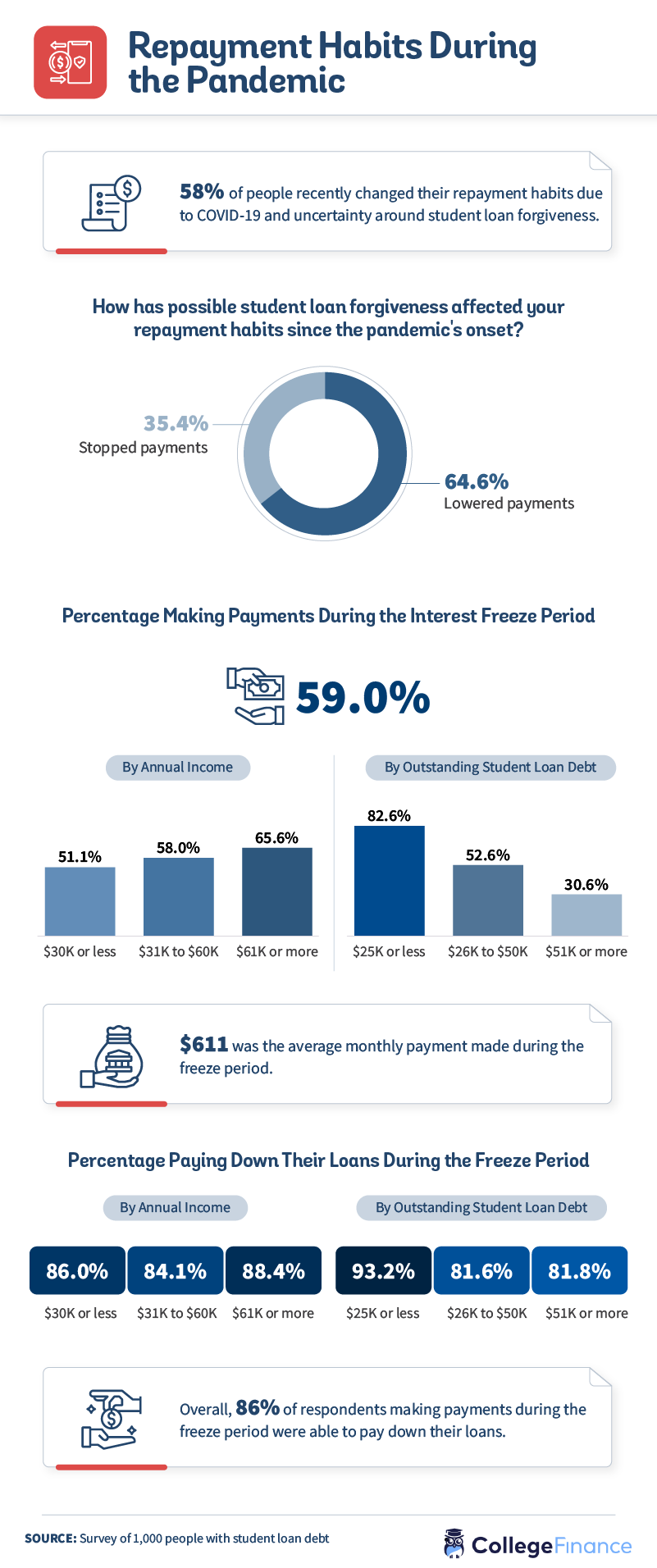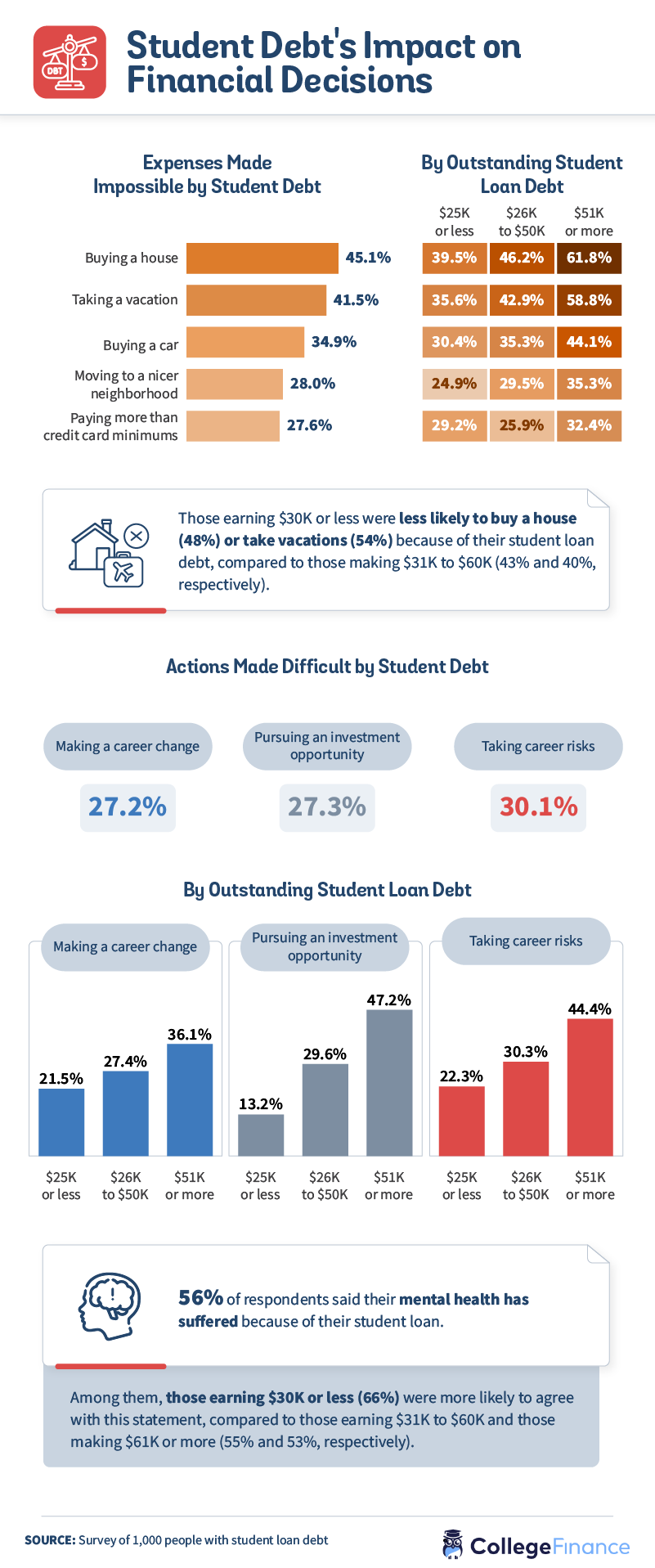Across the U.S., the average college student has roughly $37,000 in debt, and the last 12 months have created a whirlwind of change – and speculation – regarding the future of student loan debt in America.
In January 2021, President Joe Biden extended the federal student loan payment freeze for an additional eight months via executive order, pausing repayments through at least September 2021. Combined with the CARES Act signed in March 2020 by former President Donald Trump, federal student loan repayments have been paused, and accumulated 0% interest, for a total of 18 months. In addition to pauses in payments as a result of the COVID-19 pandemic, Biden made canceling $10,000 in student loan debt per borrower a part of his campaign platform, a number which may be pushed as high as $50,000 at some point in the future.
So how have these changes affected Americans with student loan debt, and how have their repayment habits changed during the pandemic? To find out, we surveyed 1,000 people about their approach to student loans over the past year. Let’s take a closer look at how much debt students are accruing based on their degrees; how many years it would take to pay off their debt; how they approached repayment during the pandemic; the challenges student debt has created; and how they feel about student loan forgiveness in the future.
Education Debt in America
For the majority of students, student loans are a reality of higher education. In 2019, roughly 70% of American students took out some kind of student loan to cover the rising cost of going to college. Between 1988 and 2018, the tuition of public, four-year colleges rose by more than 200%.

American students surveyed in this study graduated with an average of $22,000 in student loan debt, with $18,000 being the average for associate graduates, $21,000 for bachelor’s degree graduates, and $28,000 for those with graduate degrees (e.g., masters, Ph.D.s). Higher loan amounts were more common among those with refinanced loans ($24,000) and federal loans ($24,000) compared to grads with private loans ($20,000). While roughly 1 in 3 graduates with a bachelor’s degree had private loans, nearly 65% reported having federal student loans, and fewer than 3% had refinanced their loans. Students attending private universities had an average of $4,000 more in student loan debt at graduation than those at public institutions.
Americans polled indicated having an average of $14,000 left to pay on their student loans at the time of the survey, and anticipated complete repayment would take between six and seven years based on their annual income. More than a quarter of millennials indicated it would take them eight years or more to pay off their student loan debt.
Student Loan Repayment During the Pandemic
With the uncertainty caused by possible student loan forgiveness and the economic impact of COVID-19, 58% of Americans changed their student loan repayment habits in the last year. More than a third of respondents reported not making payments at all during the pandemic as they waited for an outcome concerning student loan forgiveness, while almost 65% said they lowered their payments.

During the student loan interest freeze period, 59% of respondents continued to make payments on their loans. Americans earning $61,000 or more annually were more likely (66%) to make payments during the interest freeze period than those earning between $31,000 and $60,000 (58%) or less than $30,000 (51%). Those with less money left to pay off were also more likely to continue making payments, including 83% of people with less than $25,000 of outstanding debt. Among those continuing to make payments, the average amount was $611 per month during the freeze period.
Although many were able to continue making payments on their loans while interest rates were frozen, not all Americans anticipated being able to pay them down at the same rate once interest rates resumed. One in 4 respondents said it’s only somewhat likely that they’ll be able to make the same student loan repayments they did before the pandemic. Nearly 1 in 3 Americans reported defaulting on one of their student loan payments before the interest freeze began.
Challenges Created by Student Loans
Among the many arguments for student loan forgiveness is that the almost $1.6 trillion in national student loan debt makes certain aspects of adulthood difficult (or even impossible) to obtain. The amount of student loan debt in America is second only to mortgage debt.

Among those surveyed, 45% said their student loans have prevented them from buying a house, followed by those who said they were unable to take vacations (42%), buy a new car (35%), or pay more than the minimum on their credit card balances (28%). The barrier presented by student loans was especially high among those with more than $51,000 in debt, with 62% reporting being unable to buy a house because of their student loans, and 59% saying they were unable to take vacations. In addition to those with higher amounts of student loan debt, Americans earning lower salaries ($30,000 or less) were also less likely to buy a house (48%) or be able to afford a vacation (54%) because of their student loans.
In addition to the things that respondents are unable to afford as a result of their student loan payments, excessive student debt creates roadblocks in other ways. More than 1 in 4 Americans admitted their student loan bills had a major impact on their ability to take career risks (30%), pursue investment opportunities (27%), or make career changes (27%). More than half of Americans also agreed their mental health had suffered because of their student loans, including 66% of Americans earning less than $30,000 annually.
Support for Student Loan Forgiveness
Eighty percent of students surveyed admitted to voting for Biden in the hope that student debt cancelation would become a serious conversation in the U.S., with 45% believing Biden will deliver on student loan debt relief, and another 32% reporting being unsure. Those surveyed with a bachelor’s degree (46%) and graduate degree (45%) were more likely than Americans with an associate degree (33%) to believe student debt relief would happen during Biden’s presidency.

The vast majority of Americans (74%) agreed the government should work together to accomplish student debt forgiveness, including 82% of respondents earning less than $30,000 annually and 77% of those earning between $31,000 and $60,000. While there’s still some uncertainty around how the Biden presidency will approach student debt relief, 78% of Americans also agreed the $10,000 worth of federal student loan forgiveness the president campaigned upon should be canceled.
The Future of Student Loans in America
If the past year has been ambiguous for student loan borrowers not knowing when their payments would resume or if they should try making payments during the interest freeze, the future is truly unknown. The conversation around student loan forgiveness and relief is intensifying, but nothing concrete has been put into action yet. The average graduate leaves school with five figures in student loan debt, and many reported not being able to buy a home, take a vacation, or consider new job opportunities as a result of their payment obligations.
At CollegeFinance, our mission is to help you get the most out of your college investment. By making it easy to compare private student loans, refinance your existing loans, find scholarships, or shop around for student credit cards, our goal is to make it easy to plan, borrow, and repay every step of the way. Start comparing your options now at CollegeFinance.com.
Methodology and Limitations
We surveyed 1,000 people with student loan debt. Among them, 50.9% were men, 48.4% were women, and 0.7% preferred not to answer. Respondents’ ages ranged from 24 to 53 years old with an average age of 33.
For short, open-ended questions, outliers were removed. To help ensure that all respondents took our survey seriously, they were required to identify and correctly answer an attention-check question.
Data rely on self-reporting by the respondents and is only exploratory. Issues with self-reported responses include but aren’t limited to exaggeration, selective memory, telescoping, attribution, and bias. All values are based on estimation.
Fair Use Statement
Want to help share the way students are thinking about their student loans in 2021? Simply include a link back to this page in your story for any noncommercial use as credit to our creative contributors for their work on this report.


